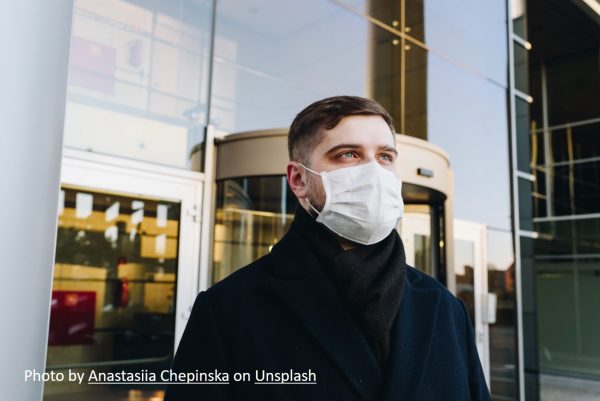
Face mask care and wearing tips
Due to shortage of facial mask Governments and health officials are asking people to wear cloth face covering in public as precautions to protect against Covid-19.
Until recently, CDC and WHO advised general public that face mask is not necessary for those who do not have symptoms of Covid-19. But the rapid spread of the pandemic has made health official to investigate the matter seriously and are suggesting wearing facemask at least when we must step out of the house in public or if we have cough and cold. It is compulsory for health care workers, patients with COVID-19 or COVID-19 symptoms to wear facemask.
Center for disease control is released a statement recommending everyone wearing at least a cloth face covering while visiting grocery or pharmacies. Reason for this is, many who are infected with coronavirus might not show any symptoms but can still transmit the germ.
The two main points to consider if you are looking for a mask are:
- The filtration level in the mask defines the percentage of microscopic particles and the droplets that are prevented from passing through. If the filtration level is high, virus cannot make its way through mask and spreading will be minimized.
- A properly fitted mask means less virus particles enter or exit the mask through the gap or openings on top or sides, bottom of the mask.
Recommended mask types:
N95 masks: Highly recommended face mask is N95 respirators as they filter 95% of the particles and it well on the face.
Surgical masks: PM 2.5 -Surgical masks are designed for those who live in high air polluted areas to filter the air. These are PM2.5 masks and filtration capacity is 62-65%. Unlike N95, these does not fit and seal the face. In these air is sent upwards to minimize spread of germs.
If you do not have surgical or medical grade mask, then consider making a face mask at home using simple sewing method or there are many YouTube channels showing DIY home face masks.
Cloth face masks: Due to shortage of facial masks, people are wearing cloth face mask. This also helps to reserve the surgical masks to health care workers. If you are considering cloth face masks, then you should keep these important points in mind –
- Mask should fit snugly, comfortably against the side of the face
- Should be secure with ties or ear loops
- Include multiple layers of fabric
- It should allow for breathing without restriction.
- Should be able to wash and machine dried without damaging or tearing or changing the shape.
- Face cloth should not be placed on young children aged below two years.
- You can make cloth face mask using old good tea shirt, bandana, old cotton towels or scarf
- You can also insert filters inside the face mask.
- Good fabric (tightly woven) are ideal for face mask
- Use minimum two layers of fabric for face mask construction. One-layer fabric is not effective and will not perform well.
- Cotton, linen, silk, cotton-polyester blend fabric is good for face mask
- One should feel comfortable with material as well as it should be breathable
How to put face mask
- Clean your hands with soap water or hand sanitizer
- Use washed face mask
- With PM2.5 mask, ensure the colored side is facing outside
- Mask must cover your nose and mouth, sit securely on the chin
- After wearing one last time check whether it is fitting and sitting properly
- Do not touch face and mask once you step out of the house
Precautions for removing face mask
- Sanitize face mask after you use it for the day. Do not ask others to remove or touch your mask!
- Wash them regularly, after your visit to grocery or pharmacy.
- Soak them in detergent water for few minutes and then wash. Use hot water for washing
- Do not touch your eyes, nose and mouth when removing the face mask. Do not touch inside of the mask.
- Wash hands immediately after removing the mask.
- If the mask is disposable, dispose and immediately wash hands
Apart from stitching the mask, you can prepare facial mask in simple steps. Watch this video to how to know steps for DIY face masks
References:
- https://www.cdc.gov/coronavirus/
- https://abcnews.go.com/
- www.WerIndia.com
Author: Sumana Rao | Posted on: April 16, 2020
« DIY No Sew Face Masks Positive impacts of Covid-19 on environment »






















Write a comment